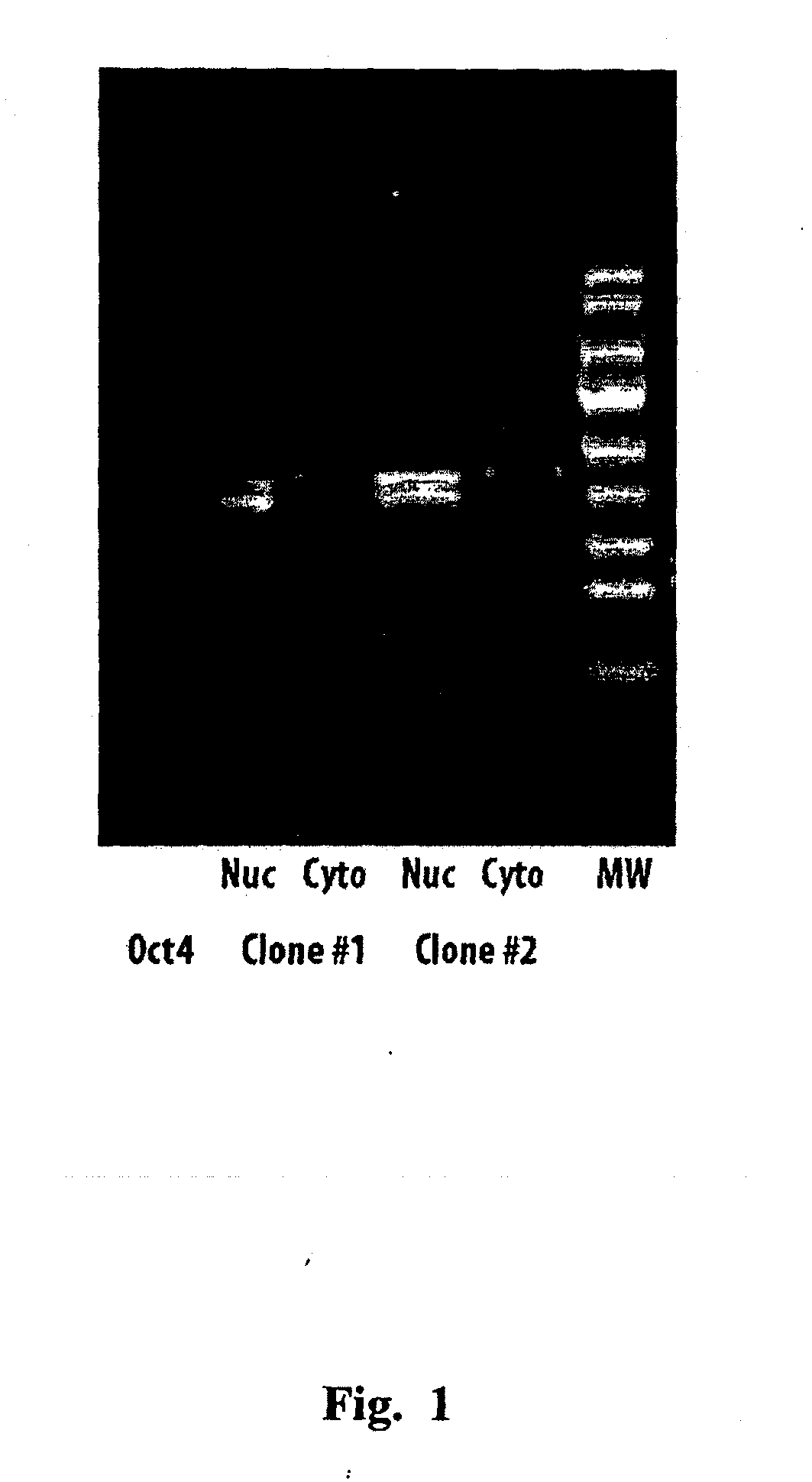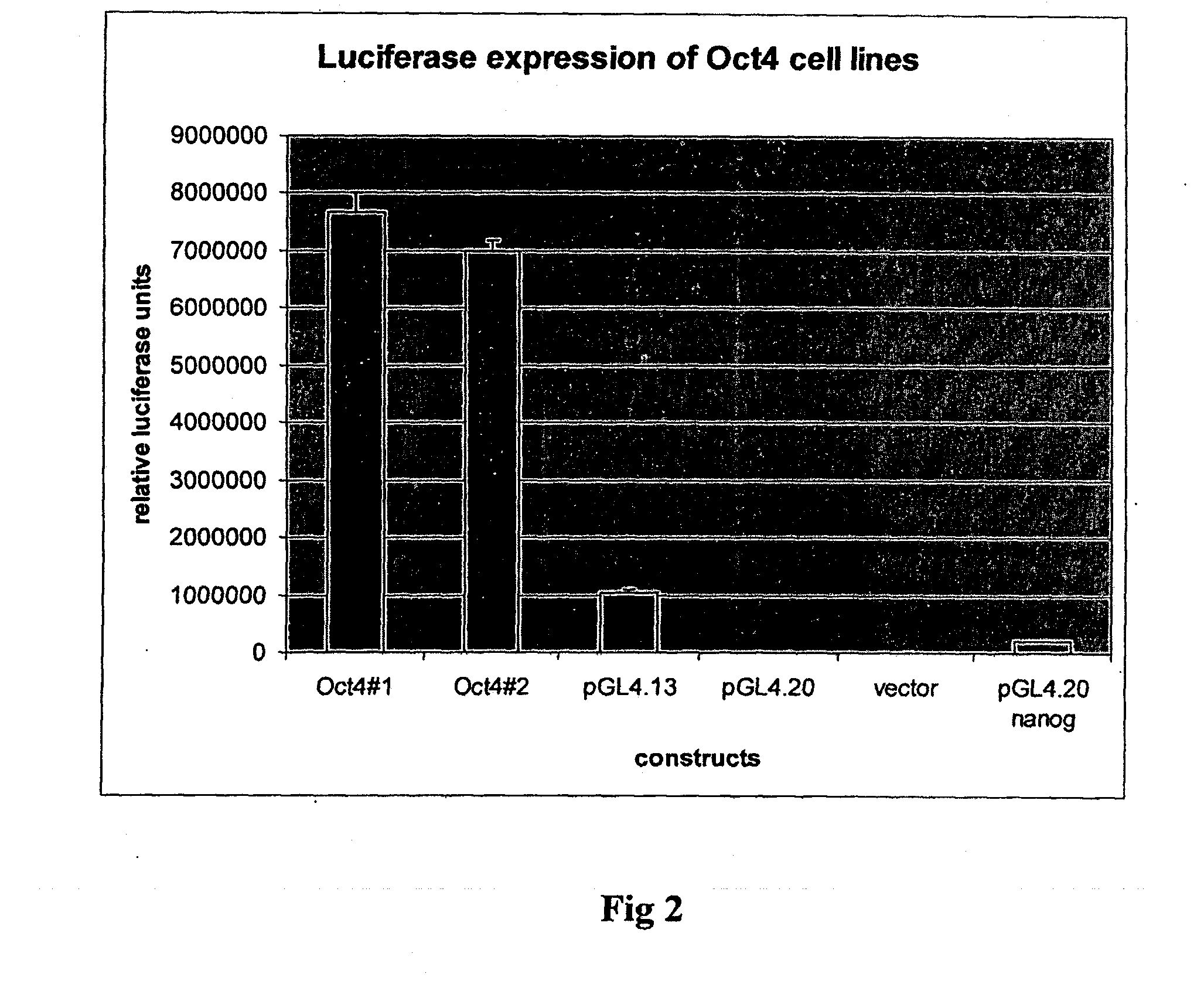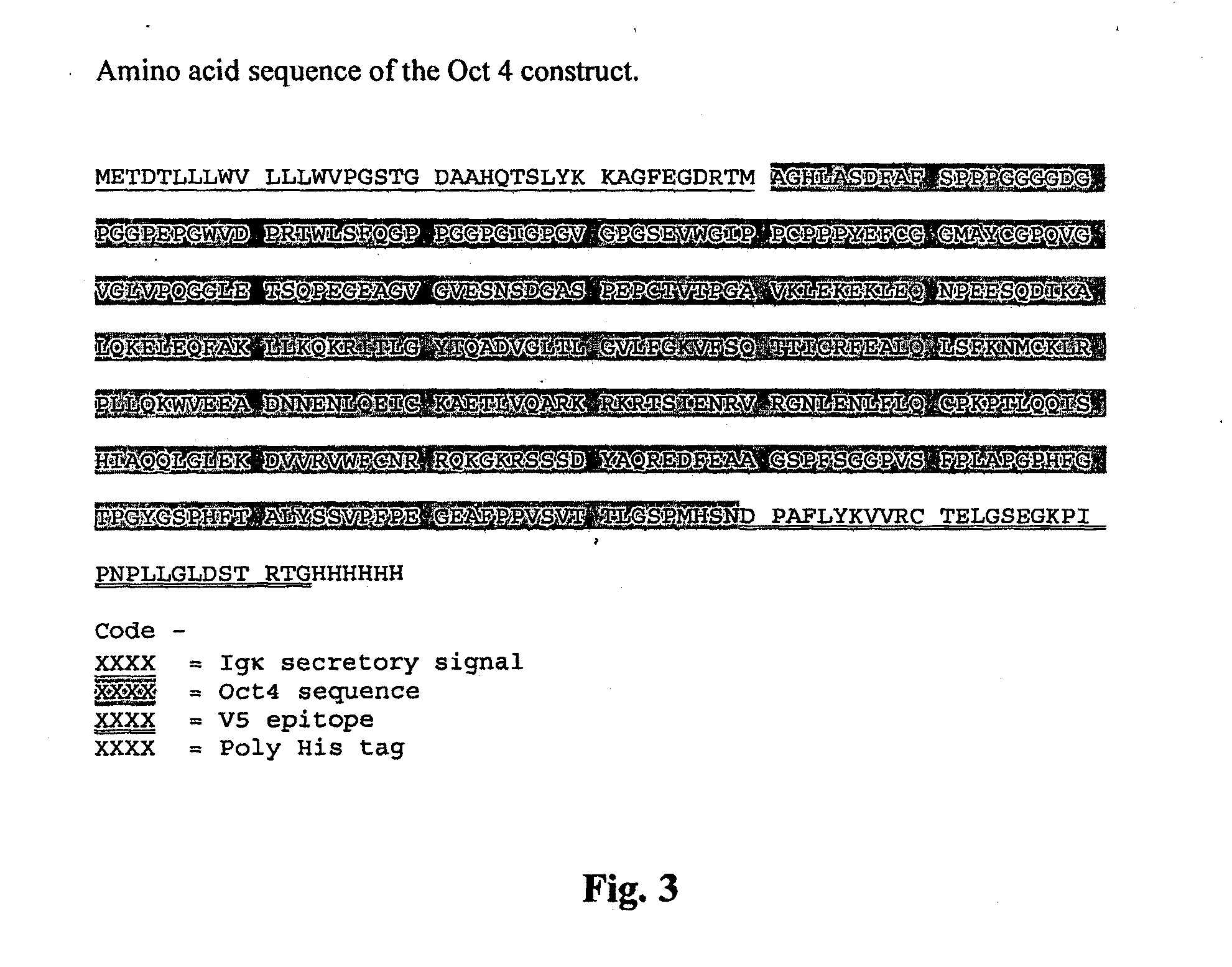Methods of inducing pluripotency involving oct4 protein
a technology of oct4 protein and pluripotency, which is applied in the field of inducing pluripotency in mammalian cells, can solve the problems of limited application of es cells to clinical therapeutics, ethically unsound, and second generation animals with very high incidence of tumours, and achieve the effect of maintaining pluripotency
- Summary
- Abstract
- Description
- Claims
- Application Information
AI Technical Summary
Benefits of technology
Problems solved by technology
Method used
Image
Examples
example 1
Production and Purification of Oct4 Protein
Materials and Methods
[0079]The sequence of human Oct4 was cloned and sequenced from an embryonic stem cell cDNA library using the primers shown in Table 1. A second variant was then made by fusing the HIV-TAT sequence to the 3′ end of the Oct4 sequence, using the primers shown in Table 1. These clones were then inserted into the pSecTag / FRT / V5-His-TOPO vector using standard methods. This vector includes an Igic secretory signal, allowing the protein to be secreted into the medium. The recombinant proteins (SEQ ID NOS. 8 and 9 and FIGS. 3 and 4, respectively) also have a V5 tag to allow identification and tracking of the protein, and a His sequence to enable purification on a nickel column. The Oct4-TAT clone was then stably transfected into chinese hamster ovary (CHO) cells.
TABLE 1Oct4 Primer SequencesPrimerOct4 Forwardggcttcgaaggagatagaaccatggcgggacacctggcttcg,Oct4-TAT ForwardgatagaaccatgtatggcaggaagaagcggagacagcgacgaagagcgggacacctggcttcgO...
example 2
Functionality of the Recombinant Oct4 Protein
Materials and Methods
[0082]A luciferase reporter was used to quantitate functionality of the recombinant protein. The promoter sequence for Nanog, a downstream target of Oct4, was amplified from genomic DNA by PCR using the primers shown in Table 2. The full Nanog promoter sequence is shown in SEQ 10. This was then inserted into pGL reporter vector (Invitrogen), which includes a luciferase sequence downstream of the inserted promoter. The vector was then amplified in E. coli, isolated and then transfected into CHO cell lines stably transfected with the Oct4-TAT construct. Luminescence was measured 48 hours later using a Tecan luminometer.
TABLE 2Nanog promoter primersPrimerNanog promotercgcggtaccgatgggcacggagtagtcttg,ForwardNanog promotergttagtatagaggaagaggagctcgaggcgReverse
Results
[0083]FIG. 2 shows the expression of luciferase in two subclones of CHO cells stably transfected with the Oct4 construct. The levels of luciferase expression are...
PUM
| Property | Measurement | Unit |
|---|---|---|
| temperature | aaaaa | aaaaa |
| cell mass | aaaaa | aaaaa |
| permeable | aaaaa | aaaaa |
Abstract
Description
Claims
Application Information
 Login to View More
Login to View More - R&D
- Intellectual Property
- Life Sciences
- Materials
- Tech Scout
- Unparalleled Data Quality
- Higher Quality Content
- 60% Fewer Hallucinations
Browse by: Latest US Patents, China's latest patents, Technical Efficacy Thesaurus, Application Domain, Technology Topic, Popular Technical Reports.
© 2025 PatSnap. All rights reserved.Legal|Privacy policy|Modern Slavery Act Transparency Statement|Sitemap|About US| Contact US: help@patsnap.com



